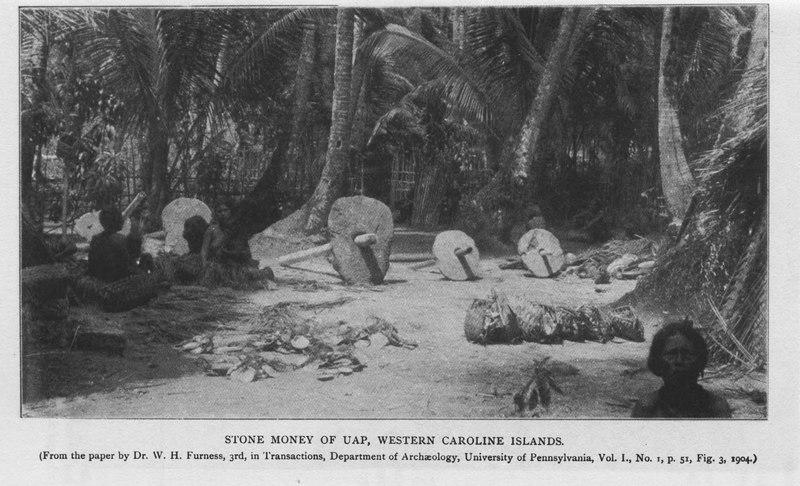Forest View Farms 4H Silver Spurs
Thursday, February 10, 2011
for fun...
Sunday, January 23, 2011
Yap
Saturday, January 22, 2011
YAP
Yap's Cultural Heritage
Stone Money
Exchange is an important part of life in Yap as it is in all cultures. Yapese have used intriguing stone money for centuries. It is found nowhere else in the world. The first stone money quarrying in the Palau Islands may have begun as far back as 125 A.D. The sparkling rock is a form of crystalline calcite that is found primarily in the colorful glistening walls of limestone caverns.
Hundreds of voyages followed the initial trip to Palau. Many men attempted the hazardous passage and more that a few perished in the process. The 250 mile canoe journey took about five days one way if the weather was good and required skillful sailing. The larger pieces of stone money that are now a familiar fixture in most Yapese villages was an arduous task to make and return to Yap, increasing its value greatly.
People and Language
There are four distinct languages indigenous to Yap State - Yapese, Ulithian, Woleian, and Satawalese - and some theorists point to the distinct languages as evidence that the people of Yap and the Outer Islands are descendants of different ancient migrating societies. According to this theory, the Yapese people may be descendants of an ancient Indonesian or Philippine culture, and the Outer Island people descendants of a Melanesian or Polynesian culture.
Tattooing
Until the twentieth century, many Yapese and Outer Islanders decorated their bodies with intricate tattoo patterns. Three distinctive types ("Yol," "Gachow." and "Salbachag") were used to designate high status, expertise in fighting, or simply personal preferences. The process of tattooing the legs or full body involved a great deal of pain as soot was burned into the body to make the exquisite designs.There are still tattoo masters the Outer Islands, and, while full body tattoos are increasingly rare, more than a few Yapese and Outer Islanders have local tattoos of popular images like dolphins or birds on their torso.
The Arts in Yapese Society
It begins with a thunderous clap, repeated over and over by a line of solemn dancers until a simple rhythm is firmly established. From the center of the line a solitary voice emits a powerful rasping wail introducing a story told in a forgotten tongue. The hypnotic sound of the wailer's voice floats out across the earthen dance amphitheater with its ancient, ceremonial stone seats and backrests and over the moonlit sea. All within hearing range are captivated, transported through time to a mystical bygone era. Suddenly the single voice is joined by a mighty, reverberating chorus of voices bellowing and ancient chant - the dance is joined.Yap's most highly developed art form, dance, or "Churu" is a central part of the State's culture. Ultimately, Yapese dancing is a form of storytelling and oral history. There are four main types: Sitting, Standing, Marching and Bamboo. Traditionally, dances are segregated by sex, although in recent years bamboo dances have been performed jointly by men and women. Bamboo and Standing dances are particularly taxing physically and are usually reserved for the young. Yapese and Outer Islanders begin dancing at a young age and may dance until well into their fifties when the fluid movement necessary for dancing begins to be more difficult to maintain.Dances often tell the stories of canoes, or conquest, and more recently, religious events. Many dances are laced with double meanings and some, such as the "Gaslew", a dance for men that women are forbidden to watch, are quite bawdy. (Of course, if women didn't manage to watch the "Gaslew", chances are the young men would have given this type of dance up long ago!) One intriguing kind of dance that is not as frequently performed anymore is the "Tayor", which is performed by women at multi-village celebrations called "Guywol." During the dance the women may ask for anything in the host village that they want - food, stone money or even a canoe - and the host must generously furnish it!Dancing is an interactive sport in Yap, with the observers playing the role of coaches and critics. Old men or women usually occupy the choicest seats and are merciless in their criticism - exhorting the dancer to get down lower in the painful crouch that is their primary stance or to make sure their eyes follow the rhythm of the dance. Given the intense scrutiny, dancers often practice, by the light of the moon, for up to a year before a major performance.Dancers wear beautiful costumes, like multicolored hibiscus skirts, and ornamental head-dress, and cover their bodies with flowers, coconut oil and yellow turmeric powder prior to performing.
Shell Money and Necklaces Stone
money is by no means the only Yapese valuable. The most highly valued money on island is called "Gaw" a necklace formed of shells and whale teeth. This valuable is reserved for chiefs."Gaw" was first brought to Yap by the ancient navigator Angumang of Teb village in Tomil. According to legend Angumang discovered the shell necklaces while on a voyage to Udot Island in Chuuk lagoon. While there he saw some beautiful strings of shell worn around the waists of a group of Chuukese women who were performing a dance. Captivated by the beauty of the shells Andgumang decided to obtain them and, late at night, stole nine from the area where the women put them for safekeeping. In the morning, the Chuukese discovered the theft and suspicion immediately fell on the outsider Angumang who was down at the beach preparing to depart for Yap. An expedition of Chuukese men was quickly rounded up and sent to the beach to search Angumang's canoe and retrieve the stolen valuable. After an exhaustive but fruitless search, though, the Chuukese were forced to release Angumang and his crew who piously proclaimed their innocence.Sometime later, Angumang and his crew arrived in Yap. They had many stories to tell and were loaded down with gifts obtained during their long voyage among them nine ropes of shells that made beautiful necklaces - gifts from the people of Chuuk. Unbeknownst to the Chuukese, Angumang had hidden the stolen goods in hollowed pieces of bamboo on his boat!Another important Yapese valuable is "Yar", or shell money. There are four kinds of Yapese shell money that are used for important events like marriage proposals and celebrations, as well as to tender traditional apologies. Shell money is also used as payment for local medicine.One kind of shell money comes from Palau, another from the Philippines and Indonesia. The third kind of shell money comes from a sunken coral island thirty-five miles north of Yap called Seepin and the fourth is indigenous to Yap. The types of shell money are easily distinguished by Yapese based on the coloring on the insides of the shells. Some of the shell are whole while others are cut and attached to decorated wooden handles, coupled like an oyster shell, or put in groups of five on lengths of coconut rope.There are important norms governing the exchange of shell money that are passed down from generation to generation, and the Yapese pay close attention to the type and number of shell money that is offered during exchanges. An inappropriate offering may result in under or overpayment for a particular service and can be refused, much to the embarrassment of the offering party.
http://www.everyculture.com/wc/Mauritania-to-Nigeria/Micronesians.html
CLOTHING
Micronesians wear Western-style clothing most of the time. However, for ceremonial occasions they often return to traditional styles of dress. Before European colonization, typical clothing was a loincloth for men and a skirt of natural fibers for women.
FOLKLORE
One Palauan myth recounts the story of a magical breadfruit tree that the child of the sun provided for his human mother. In order to provide fish for her to eat, the son cut a hole in the center of a breadfruit tree growing outside her house. Fish were thrown through the hole by the waves of the sea. The mother just had to walk out her door to collect fish. Her neighbors became jealous and cut down the breadfruit tree. This caused a catastrophic flood that engulfed the whole island. Only the mother was saved; her son flew her through the sky on a raft.
MAJOR HOLIDAYS
Major religious holidays in Micronesia now are based on the Christian calendar. Many Micronesian states celebrate Ash Wednesday (in February), Easter (in March or April), All Saints' Day (in November), and Christmas (December 25). American secular holidays, including Thanksgiving, are observed in many parts of Micronesia. A major event for the display of traditional culture is the South Pacific Arts Festival. Performing groups from a number of different Pacific Island nations participate in it.
CULTURAL HERITAGE
Micronesian music is mainly vocal. Very few musical instruments are produced by Micronesian cultures. The shell trumpet and the nose flute are the most common instruments in the region.
Polynesian-style music from Hawaii has become popular in parts of Micronesia. American music and dance have been introduced by television and by Americans living on the islands
EMPLOYMENT
Traditionally, men have engaged in fishing and harvesting. Women were responsible for gardening and household chores. Wage labor is now common for both men and women in Micronesia. Many states have set minimum-wage standards. In the Northern Marianas Islands, the minimum hourly wage for 1996 was $3.05.
WEBSITES
World Travel Guide. Micronesia. [Online] Available http://www.wtgonline.com/country/fm/gen.html , 1998.
Grace
The population of Micronesia was estimated at 134,597 in July 2001. The current annual population growth rate is 3.28 percent, which will result in a population of 176,815 by 2010. The average children per family is 3.83 children.
There are 9 ethnic Micronesian and Polynesian groups, spread across the islands. In 1994, around 53,319 people lived in Chuuk; 33,692 in Pohnpei; 11,178 in Yap; and 7,317 in Kosrae. The highest population density was estimated in Chuuk island with 419.8 people per square kilometer (1,087 per square mile) in 1994.
The Federated States of Micronesia forms (with Palau) the archipelago of the Caroline Islands, and lies about 497 miles east of the Philippines. The Federated States of Micronesia (FSM) consists of 607 islands and includes (from west to east) the states of Yap, Chuuk (formerly Truk), Pohnpei (formerly Ponape), and Kosrae. Micronesia covers about 271 square miles of land , has a coastline of 3,798 miles and is scattered over more than 1 million square miles of the ocean. Micronesia's largest island cluster is Pohnpei (163 islands), with an area of 133 square miles, while the smallest cluster is Kosrae (5 islands), spanning 42.5 square miles. The islands include a variety of terrains, ranging from mountainous islands to low, coral atolls and volcanic outcrops.
Nationality:noun: Micronesian(s) adjective: Micronesian; Chuukese, Kosraen(s), Pohnpeian(s), Yapese
Ethnic groups:Chuukese 48.8%, Pohnpeian 24.2%, Kosraean 6.2%, Yapese 5.2%, Yap outer islands 4.5%, Asian 1.8%, Polynesian 1.5%, other 6.4%, unknown 1.4% (2000 census)
Religions:Roman Catholic 50%, Protestant 47%, other 3%
Languages:English (official and common language), Chuukese, Kosrean, Pohnpeian, Yapese, Ulithian, Woleaian, Nukuoro, Kapingamarangi
Micronesia Food forms a prominent part of the culture of the island nation. The chief food items of Micronesia include starchy carbohydrate based foods, meat and fruits. The custom of sharing food, prevalent in Micronesia, symbolizes the strong bonds existent between the people of the island nation.Traditional meals of Micronesia feature all major food items available in the country. The starchy carbohydrate foods of Micronesia comprises of breadfruit, taro, sweet potatoes, yams, cassava, etc. Livestock tended locally, like pigs and chickens, form parts of important feasts of Micronesia.Fish are also integral part of Micronesia Food. Micronesia, being an island nation, provides the people with an ample quantity of fish to be utilized as one of the chief food items of Micronesia. Shellfish, marine turtles and crustaceans are also eaten by the people of Micronesia. Fruits grown in abundance all over the country are part of the food in Micronesia. Some of the fruits grown in Micronesia are banana, coconut, papaya, mango, pandanus, citrus fruits, etc.
I found a lot of information at these sites.
http://www.mapsofworld.com/micronesia/culture-and-society/food.html
http://www.visit-fsm.org/
http://www.state.gov/r/pa/ei/bgn/1839.htm
http://www.fsmgov.org/
Friday, January 21, 2011
First Meeting Minutes January 21st 5p - 7p
We also did a little work...
Talked about the background of Micronesia and it's 4 states
Discussed projects we would like to complete
- Make Stone Money
- Basket weaving
- Clothing
- Food---taro, breadfruit, fish
- Kosrae: Emma and Myles
- Chuuk: Carisa, Robbie, Eric, Sonia
- Pohnpei: Amanda and Gaby
- Yap: Margaret and Grace
Please make sure you make a post on the blog by this Sunday January 23rd on your state and something you personally wanted to learn about.
Please make a comment to at least one other persons posting no later than Wednesday January 26th.
For our next meeting on Friday January 28th each participant will make their own Rai....or stone money. After some great suggestions, we have decided to make our stone money out of concrete to make it look more like the real thing. Please come prepared to the next meeting hungry and ready to make Rai!
Happy Blogging!
Rai.....also known as the Stone Money of Yap
Great Reference site
http://www.visit-fsm.org/visitors/index.html
Grace
My state is Yap and I am working with Margaret Good.
My name is Grace.
Wednesday, January 19, 2011
Myles & Emma choose music and dance!
Traditional dances on the main islands includes stick dancing on Pohnpei, Chuuk and Yap, standing dances on Chuuk and sitting dances on Yap[1] and Chuuk. The Yapese are particularly known for their skills in dancing. The Yapese stick dance is performed by men, women and children together, while standing dances are performed either by women or men and boys, but never both together. The men participate in various dancing competitions, which are segregated by caste; the lower castes have some distinct dances, such as a woman's standing dance, but can only dance when authorized by a person of a higher caste.[2] Chuuk shares many of the similar dance styles with Yap because of similar cultural heritage with Chuuk and the outer islands of Yap. Chuuk most mysterious and rarest dance is called the "Moonlight Dance" Its one of the few times which both men and women dance together. It can only happen during a full moon with permission of the village chief. Traditionally speaking, this was a way for young males and females to get together.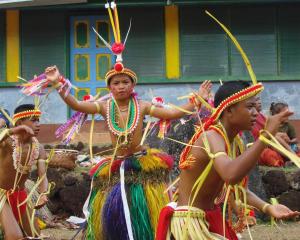

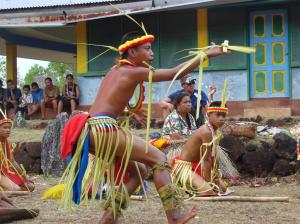
Wednesday, January 12, 2011
MY picks
Margaret
Tuesday, January 11, 2011
Dr. Felicia Beardsley, Archaeologist who studied Micronesia
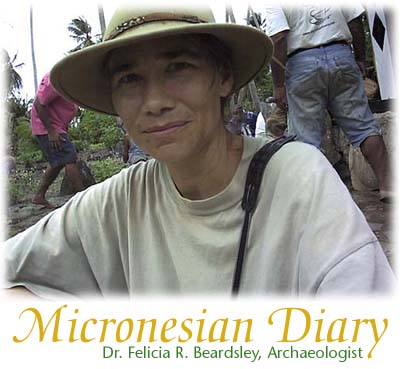
http://www.intangible.org/Features/micronesia/index.html
http://www.kosraevillage.com/archeology.shtml#safonfok
Good Information About Micronesia -CIA Website
https://www.cia.gov/library/publications/the-world-factbook/geos/fm.html
Click on the link above to get lots of information on Micronesia! Have Fun!
Let's get started!!!
I have added everyone who signed up for the International Fair as "authors" on our blog. Please check your emails to make sure you have received a link to sign up as an "author"; this will enable everyone to post to the blog in addition to adding comments.
Please take a look at the following links to get some idea's about what YOU would like to learn about Micronesia, and what type of project YOU would like to do. If you have any questions or need assistance with posting or project idea's please let me know.
Once you have decided on a topic and project, please share your learning experience with everyone on the blog.
I learned about Micronesia because of my love for diving. My 29th birthday was an milestone for me, as a result I wanted to do something special.....so I spent 5 weeks traveling and scuba diving in Micronesia. The people and culture were just as amazing as my experiences under the water scuba diving. I hope that on our journey of discovery I can share with you some of the special memories, people and culture that makes Micronesia a very special place that will always be close to my heart.


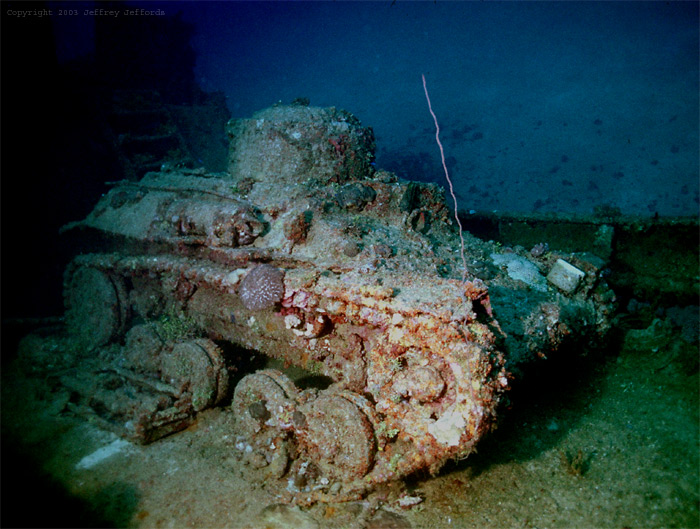
Sample text in Yapese
Gubine gidii mani gargeleg nga faileng nibapuf matt'awen nge rogon. Bay laniyan nipii e nam, ere ngauda ted matt'aawen e chaa niba chugur ngoded nimod walag dad.Translation
All human beings are born free and equal in dignity and rights. They are endowed with reason and conscience and should act towards one another in a spirit of brotherhood.(Article 1 of the Universal Declaration of Human Rights)
Link
Information about Yapese languagehttp://en.wikipedia.org/wiki/Yapese_language
http://ppo.prel.org/cs/ppo/run/zzz?x-r=ppobrowse&title_id=3733&search_type=title
http://www2.hawaii.edu/~ballanty/dissertation/dissch2.pdf (PDF) http://faroutliers.blogspot.com/2004/08/yapese-spelling-reform-that-damn-q.html
Information about Yap and Micronesia
http://www.prel.org/pacserv/yap.asp
http://www.visit-fsm.org
http://www.visityap.com
Sunday, January 9, 2011
Thursday, January 6, 2011
Micronesia

FVF 4H Silver Spurs will be participating in the International Fair on Sunday February 27, 2011.
The country we will be representing is the Federated States of Micronesia! Let our journey begin......
fvfsilverspurs.blogspot.com
http://en.wikipedia.org/wiki/Index_of_Federated_States_of_Micronesia-related_articles
http://en.wikipedia.org/wiki/Music_of_the_Federated_States_of_Micronesia
http://en.wikipedia.org/wiki/Truk_Lagoon
